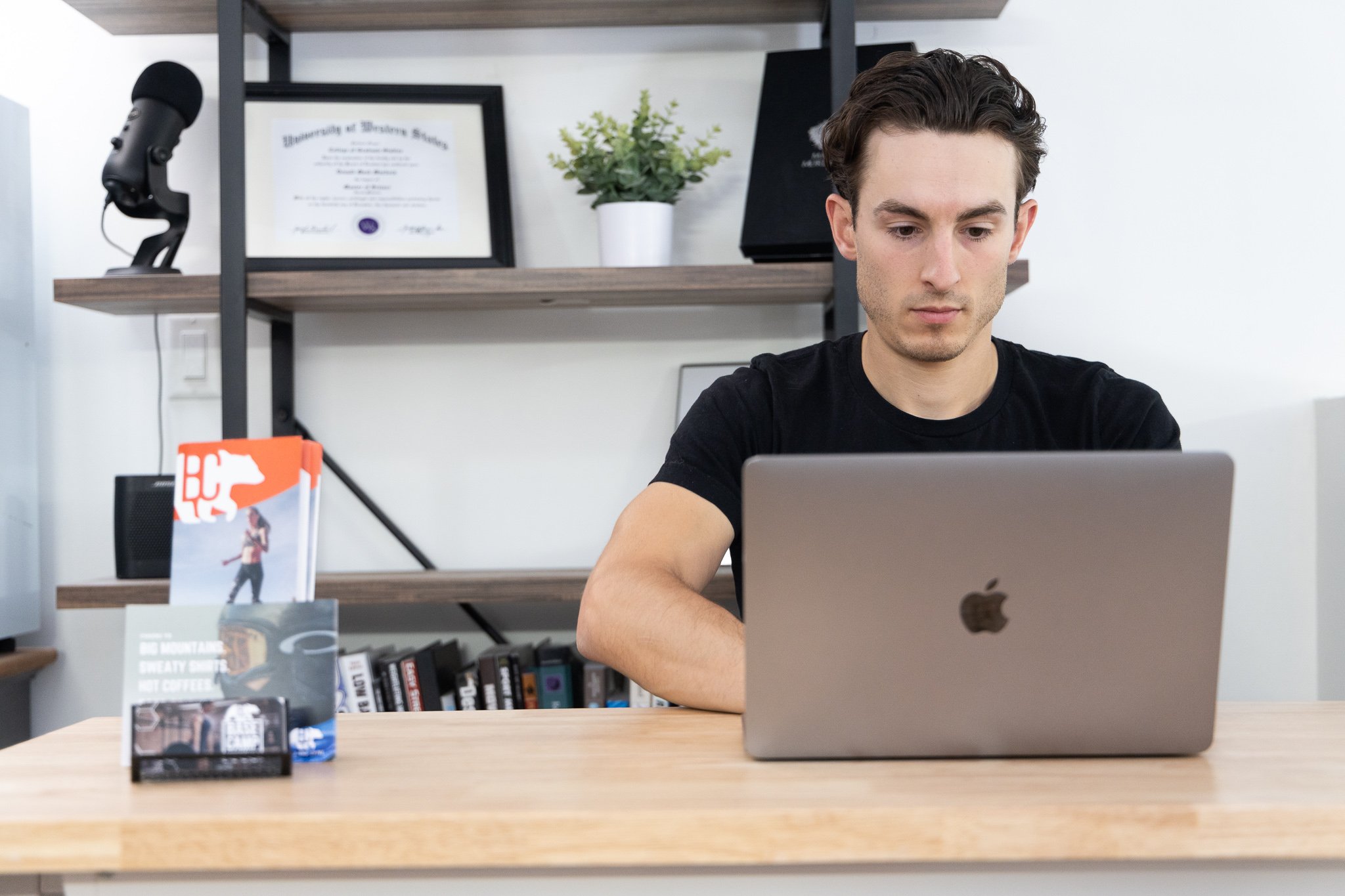
Blog
want to take a crack at your problems from home? Check out our blog posts and find the topics specific to you
Topics:
How to exercise through pain
Exercise is an integral part of a healthy lifestyle but it's not uncommon to experience some degree of discomfort or pain during or after a workout. It's important to understand how much pain is too much and when it's time to take a step back. In this blog post, we at Base Camp Chiropractic and Sports Rehab (@base.camp.doc) will share with you a useful concept: The Rule of 10, a strategy that can help you manage pain while staying active.
The Rule of 10 Explained
The Rule of 10 is a simple guideline that can help you avoid flare-ups and keep you on track with your fitness goals. It involves adding together your effort intensity and pain level, aiming to keep the total at or below 10. This way, you can continue exercising while managing your pain levels.
The Rule of 10 in Action
To better understand how the Rule of 10 works, let's look at a few examples:
Knee pain:
If your knee pain level is 3/10 and your effort level is 7/10, the total is 10/10. This is within the limit.
Hip pain:
If your hip pain level is 6/10 and your effort level is 4/10, the total is 10/10. Again, this is within the limit.
Shoulder pain:
If your shoulder pain level is 2/10 and your effort level is 8/10, the total is 10/10. This is acceptable according to the Rule of 10.
Back pain:
If your back pain level is 4/10 and your effort level is 6/10, the total is 10/10. This is an acceptable level of discomfort and effort.
Staying Active While Managing Pain
The Rule of 10 is a strategy that can help you stay active and continue exercising even while dealing with pain. It's all about balancing your effort levels with your comfort levels, allowing you to push yourself within safe limits.
We want to give credit to Ben Cormack (@corkinetic) for putting this concept out. It's a practical way to measure and manage your pain levels during exercise, enabling you to maintain your fitness regimen without putting your health at risk.
Rehab Can Be Frustrating, But It Doesn't Have to Be
Rehabilitation from an injury or surgery can be a frustrating process, especially when pain seems to halt progress. However, with the right guidance and plan, it's possible to continue your journey towards recovery.
If you're ready to get help, reach out to us at Base Camp Chiropractic and Sports Rehab. Send us a message or visit our website at www.basecampclinic.com. We're here to support you every step of the way.
Remember to save this blog post for future reference and share it with anyone who might find it useful. Stay active, stay healthy, and manage your pain smartly!
3 ways to manage pain with running (without stopping!)
Embarking on a run is not just a physical activity; it's a journey into self-discovery and the great outdoors.
Yet, what do you do when the joy of each stride is overshadowed by the unwelcome companionship of pain? At Base Camp Chiropractic and Sports Rehab, we've witnessed countless runners grappling with this predicament. The prospect of giving up something you love is disheartening, but fear not! Let’s take a look at three alternatives that can keep you on track, pain-free and on track to hit your running goals.
Running is a fantastic way to stay in shape and explore the outdoors. But what happens when every stride sends a jolt of pain through your body? At Base Camp Chiropractic and Sports Rehab, we've seen many runners struggle with this issue. Rather than quitting this activity that you love, consider these three alternatives.
1. Manipulate the Volume
One of the most common mistakes runners make is trying to do too much, too soon. This approach often leads to overuse injuries and burnout. Instead of stopping completely or pushing through the pain, consider adjusting the volume of your runs.
For example, if you have a long run planned for Saturday with a target of 20 km, you could split this into two separate runs. You could run 10 km in the morning and then another 10 km in the evening. This approach reduces the strain on your body while still allowing you to reach your mileage goals.
2. Change Your Pace or Cadence
Another way to address running-related pain is by changing your pace or cadence. Your pace (your mph or km/h), and your cadence (the number of steps you take per minute), both play a significant role in how your body absorbs the impact of each stride.
Adjusting your pace can change the load on your joints and muscles. Increasing or decreasing your pace can sometimes alleviate pain by changing the way your foot strikes the ground.
Similarly, increasing your cadence by 10% can also change the joint loads. By taking more steps per minute, you reduce the impact of each individual step, spreading the load more evenly across your stride.
3. Warm Up!
Our final tip is to always warm up before running. A thorough warm-up can prepare your body for the demands of running and potentially reduce the risk of injury. Some of our favourite warm-up exercises include calf raises, lunges, squats, and toe lifts. These movements target the muscles used most during running, ensuring they are ready for action.
Running should be an enjoyable activity, not something that causes you pain. If you're experiencing pain while running and these tips don't help, don't hesitate to reach out to us at Base Camp Chiropractic and Sports Rehab. We're here to help you get back on track and enjoy your runs again.
Remember, running is an exhilarating pursuit, and pain shouldn't be a constant companion on your journey.
Instead of succumbing to the frustration of persistent discomfort, consider manipulating the volume, changing your pace or cadence, and incorporating a thorough warm-up into your routine.
Should these tips fall short, the experts at Base Camp Chiropractic and Sports Rehab stand ready to guide you back to pain-free runs, ensuring that every step is not just a stride but a leap towards your wellness. Embrace the joy of running – we're here to make sure it remains a source of delight in your life.
Thoracic outlet syndrome
Understanding Thoracic Outlet Syndrome and Ways to Treat It
What is it?
Let's talk about a condition called Thoracic Outlet Syndrome (TOS) and how we can deal with it. This discussion will cover the symptoms, what to expect, and the benefits of treatments like manual therapy and chiropractic care.
Breaking Down Thoracic Outlet Syndrome
Imagine your body as a busy highway, and TOS is like a traffic jam that affects nerves, blood vessels, and muscles. When these pathways get squeezed, it can lead to Thoracic Outlet Syndrome.
Symptoms
TOS can show up in a few ways:
1. Strange Feelings: You might experience tingling or numbness in your fingers or hands.
2. Pain: You could feel aching or sharp pain in your neck, shoulder, or arm.
3. Weakness: Your arm might feel weaker than usual.
What to Expect
The good news is, TOS isn't a forever problem. With the right care, many people get back to their normal activities. It's about giving your body some care to help it bounce back.
Treatment Options: Manual Therapy and Chiropractic Care
Now, let's talk about ways to make things better. Two effective methods are manual therapy and chiropractic care.
1. Manual Therapy:
- This is like a targeted massage that focuses on specific areas to release tension and improve movement.
- Skilled therapists use their hands to make your muscles and joints feel better.
2. Chiropractic Care:
- Think of a chiropractor as someone who helps your body align correctly, especially your spine.
- With gentle adjustments, chiropractors can relieve pressure on nerves and make your body work better.
Why Choose Manual Therapy and Chiropractic Care?
These treatments have some cool benefits:
1. No Surgery Needed: You won't need big operations or scary procedures. These therapies work naturally with your body.
2. Focused Care: Instead of just treating the symptoms, manual therapy and chiropractic care target the root of the problem.
3. Overall Wellness: People often feel more energetic and sleep better after these treatments. It's like a boost for your whole body.
Conclusion
In a nutshell, Thoracic Outlet Syndrome doesn't have to be a long-lasting issue. With simple, hands-on treatments like manual therapy and chiropractic care, you can get back to feeling good. These methods are like giving your body a little tune-up – helping you move better, feel better, and get back to your regular routine.
Cheers to a healthier, pain-free you!
5 Ways to keep running this winter
I would rather shop at Costco on a Saturday morning than run 1k on a treadmill. So obviously, I have found some key pieces of gear to keep me running and training outside during the winter. And having the right gear/kit also decreases your risk of injury.
1. Merino Wool Base Layers
If you haven’t made the investment, now’s the time. High quality merino wool is soft to the touch and a natural fiber. The structure of the strands make it antimicrobial which means it won’t stink and you can get away with wearing it several times before it needs washing. The fibers are hollow creating space for moisture to move away from the skin and keep you warm while moving. It’s really common for my pieces to be totally soaked but I’m unaware until I get back to the car and start peeling them off.
There are also several price brackets for wool depending on what your budget is but it’s important to remember that it’s an investment and part of your kit. Look for something that is atleast 50% merino wool.
2. Winter Running Socks
Another plug for wool socks here but some brands make merino socks specifically for running in the winter. They have extra thick fiber around the coolest parts of the foot but don’t add a ton of bulk to the places where it is less important.
3. Studding your shoes
Your tires aren’t the only rubber on the road that have the option of studding. You can stud your running shoes as well. You can easily go to the hardware store and get sheet metal screws that are ⅜ to ¼ inch at number 10 or 8. The hex shape of the screw bites into the ice when you run on them. You can leave them in a pair of your shoes for those icy days. (Obviously don’t put them in your super thin minimalist shoes.) This is a cheap way to save a little cash so that you can buy more merino ;)
DIY Ice Spikes for Winter Running
4. Buff
I have about 40 buffs sitting in a basket by our door. But I have a particular love for the fold that covers my forehead and mouth on really cold days. I almost always run with a buff in the winter so it’s nice to know all the different ways to use one based on how the run is going.
5. Emergency Kit
It’s important to understand changes to risk when we are active in the winter. During the winter I add these things to my running vest. They add a little weight but since the bear spray can come out, it’s not so bad.
Emergency Blanket
Hand Warmers
Spare Buff (sometimes they wet out and it’s disgusting)
Headlamp (it’s gonna get dark)
See ya out there!
Dr. Sam Krieg
Chiropractor at Base Camp Chiropractic and Sports Rehab
Vernon, BC
How long does it take for Achilles tendonitis to heal? (updated 2024!)
Achilles Tendon pain can be super frustrating. Learn how long it might take you to recover
Achilles Tendon pain can be INCREDIBLY frustrating.
This is especially true if you can’t participate in your activities of choice because of the pain. I often see Achilles Tendinopathy in runners, hikers, volleyball players… It sucks for everyone.
The most common question I get when someone comes in with Achilles Tendon pain is “how long is this going to take”?
This is not my favourite question to answer, because Achilles Tendon pain can last a LONG TIME.
The short answer to that question is “1-12 months”, but that doesn’t really help anyone. The slightly longer answer to that question is “it depends”, which ALSO is not very helpful…
In order to estimate your recovery time, you need to understand two things:
Severity and Stage of your injury
Other factors that influence your performance
Let’s break it down a little bit, and you can see where you might fall in the estimated recovery time.
Grading the Severity and Stage of your Injury
Achilles Tendinopathy falls into 3 Stages:
Acute (new onset of pain, up to 2 weeks)
Subacute (immediately after acute, 3 weeks-2 months
Chronic (3 months plus)
The later longer it has been since the onset of injury, the longer it generally takes to recover.
Acute Achilles Tendinitis will usually calm down in 3-4 weeks (I say CALM DOWN, not GET BETTER here. This is explained later in this article under the header ‘Calmed Down vs Gotten Better).
Subacute Achilles Tendinopathy will usually take 2-6 months to calm down. (Again, not better yet)
Chronic Achilles Tendinopathy is a tricky one and can take anywhere from 3 months to 18 months to calm down and get better.
FACTORS THAT INFLUENCE RECOVERY TIME
This list is a long one, so I will only list the ones I feel are most important. These include:
Overall Health
Crappy Diet? Super stressed out? Smoker? Comorbidities like diabetes, metabolic syndrome or heart disease? All of these things lengthen the expected recovery time.
Mindset
Positive mindsets win the rehab game.
Sleep
You can’t out rehab 5hrs per night of sleep, especially while trying to recover from an injury. You NEED 8hrs + of sleep per night if you want to get better in a reasonable time and keep the injury from coming back.
Rehab Plan
Your rehab plan needs to be well-thought-out, progressive, and appropriate to both your current state and the activities you want to get back to. If you are a runner and your rehab plan does not involve running at some point, you are following the wrong plan. Volleyball? You better be jumping at some point in your plan. (But not too much too soon…)
Calm Down vs Get Better
This happens time and time again. Someone comes to see me and together we are able to get them out of pain, and they feel better, so they decide to cancel their follow up and get back to their activity.
Inevitably, a couple of weeks later they are back in my office, 2-steps back.
This is because their injury was not fully rehabbed. Only their PAIN is better, but they have not been fully prepared to get back into their activity at 100%. This takes time, deliberate effort, and a well-thought-out progressive rehab plan.
Moral of the story: just because the pain goes away, does not mean that you are ‘better’ (especially true with Tendon injuries).
Rehab programs should generally have 3 Steps.
Step 1: Calm Stuff Down
Step 2: Build Back Up
Step 3: Bridge the Gap
MOST rehab plans end after calming stuff down. SOME plans do a decent job of building strength and endurance back up. VERY FEW programs bridge the gap between recovering from an injury and performing the way you want to.
Need some help?
That is where we come in. If you are ready to get on a plan that will get you back in action and back to doing the things you love, and KEEP THIS INJURY FROM COMING BACK, we can help.
Author: Dr Mark Murdoch, Chiropractor and Co-Founder at Base Camp Sport and Spine in Vernon, BC.
Mark Murdoch is a Doctor of Chiropractic with a Master’s Degree in Sports Medicine.
Contact: drmurdoch@basecampclinic.com
Book an Appointment with Dr Murdoch: book here
Instagram: Base.Camp.Doc





















How running injuries happen